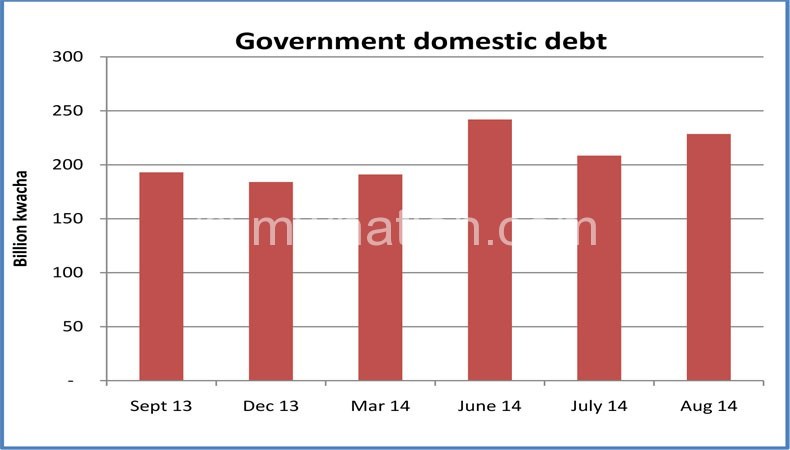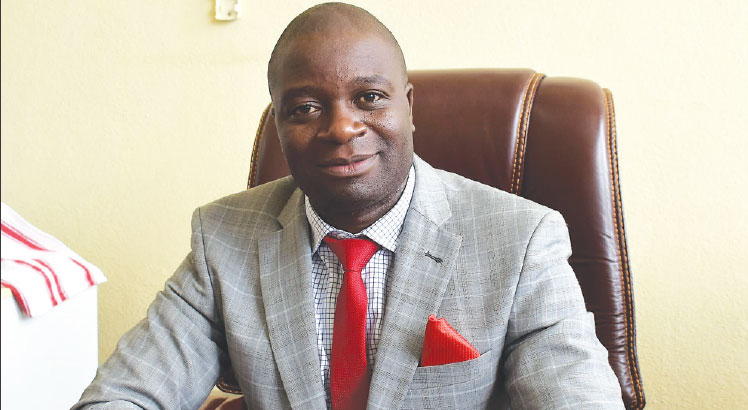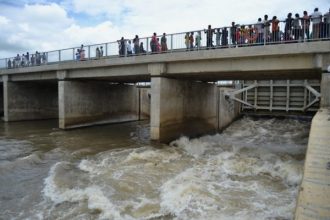Government cautioned on domestic borrowing

The Reserve Bank of Malawi (RBM) has attributed the kwacha fall to government’s increased domestic borrowing, a tendency that may raise lending rates and crowd out the private sector.
According to the recent Monetary Policy Committee (MPC) minutes, the government net domestic borrowing rose by about 10 percent to K228.5 billion in August from K208.5 billion recorded in the preceding month due to a K16.2 billion increase in credit from the monetary authorities and a K3.8 billion rise in government borrowing from the commercial banks.
During the MPC meeting, held on October 30 2014, chaired by RBM, governor Charles Chuka the committee noted that the increasing liquidity from government borrowing through the central bank is worsening the fall of the kwacha which some analysts say will hit K600 to the dollar by December.
Economists have often discouraged the government from borrowing locallyarguing that the tendency pushes up interest rates and payments and crowds out the private sector—the engine for economic growth.
In this financial year, the government has estimated that tax payers will pay K80.4 billion—slightly over 10 percent of this year’s K737 billion budget—in debt interest.
Commenting on the observation, RBM spokesperson Mbane Ngwira, in a telephone interview on Tuesday, said the central government is not only borrowing from the private sector, but also through the central bank, the country’s monetary authority.
Ngwira said although the central bank has not recommended a reduction in domestic borrowing due to the tight fiscal position the government is under—apparently due to donor aid freeze—the issue of cutting on domestic debt has been discussed in many forums.
However, Ministry of Finance, Planning and Economic Development spokesperson Nations Msowoya could not be reached on his phone on Monday.
Faced with uncertain donor support and a wide budget deficit, Minister of Finance, Economic Planning and Development Goodall Gondwe was quoted in the press as having said that the government would borrow more from external sources rather than from local sources to avoid raising interest rates and crowding out the private sector.
But faced with tight options, Malawi’s external debt rose to about $1.54 billion (about K752 billion) by end of second quarter this year, a situation that may see the country pay more in interests.
RBM, in its second quarter financial and economic report released recently, said the external debt stock at the end of the second quarter increased by 3.2 percent to about $1.54 billion compared to $1.49 billion in the preceding quarter due to disbursements from the International Development Association (IDA), Export and Import Bank of India, and African Development Fund (ADF).





